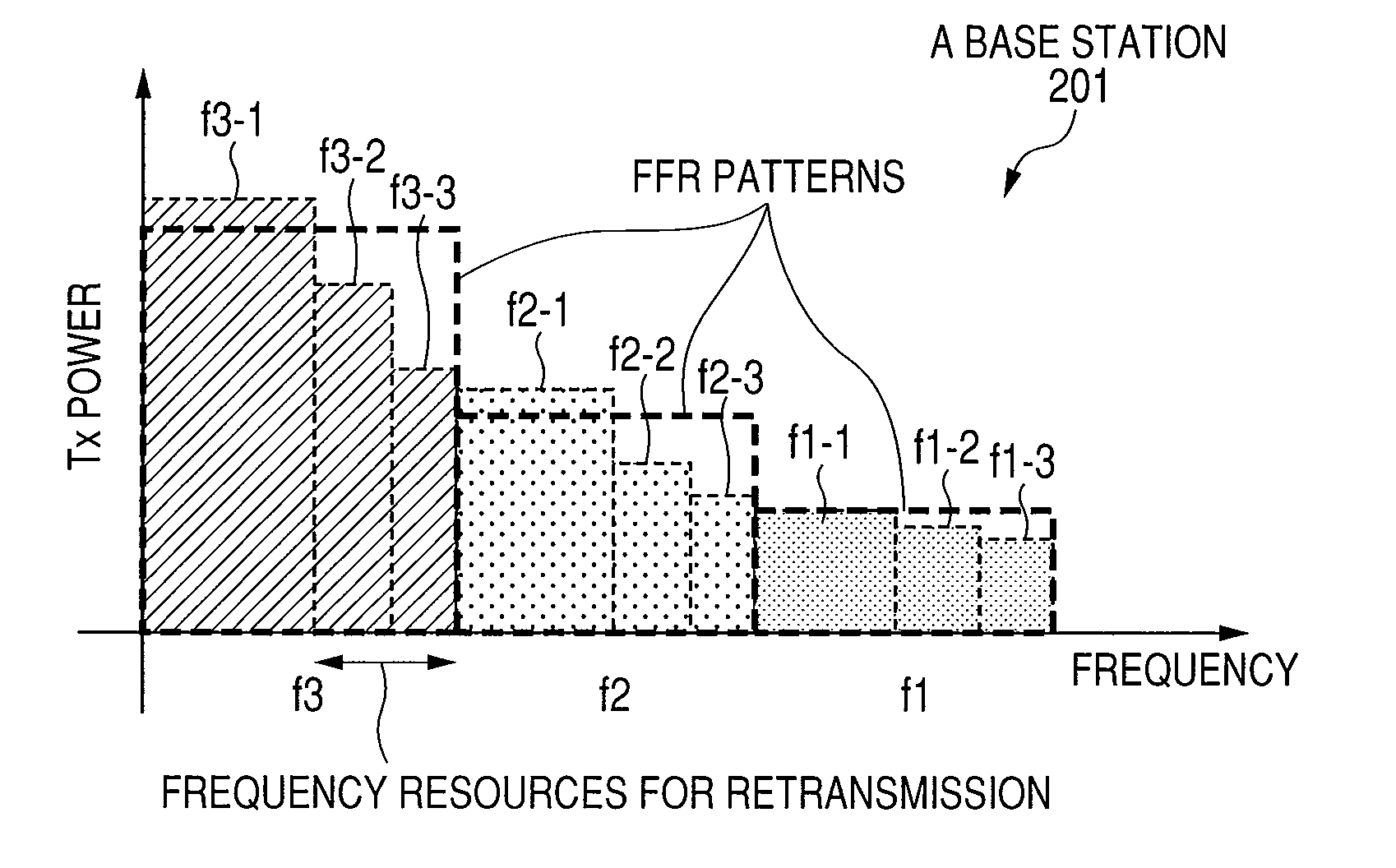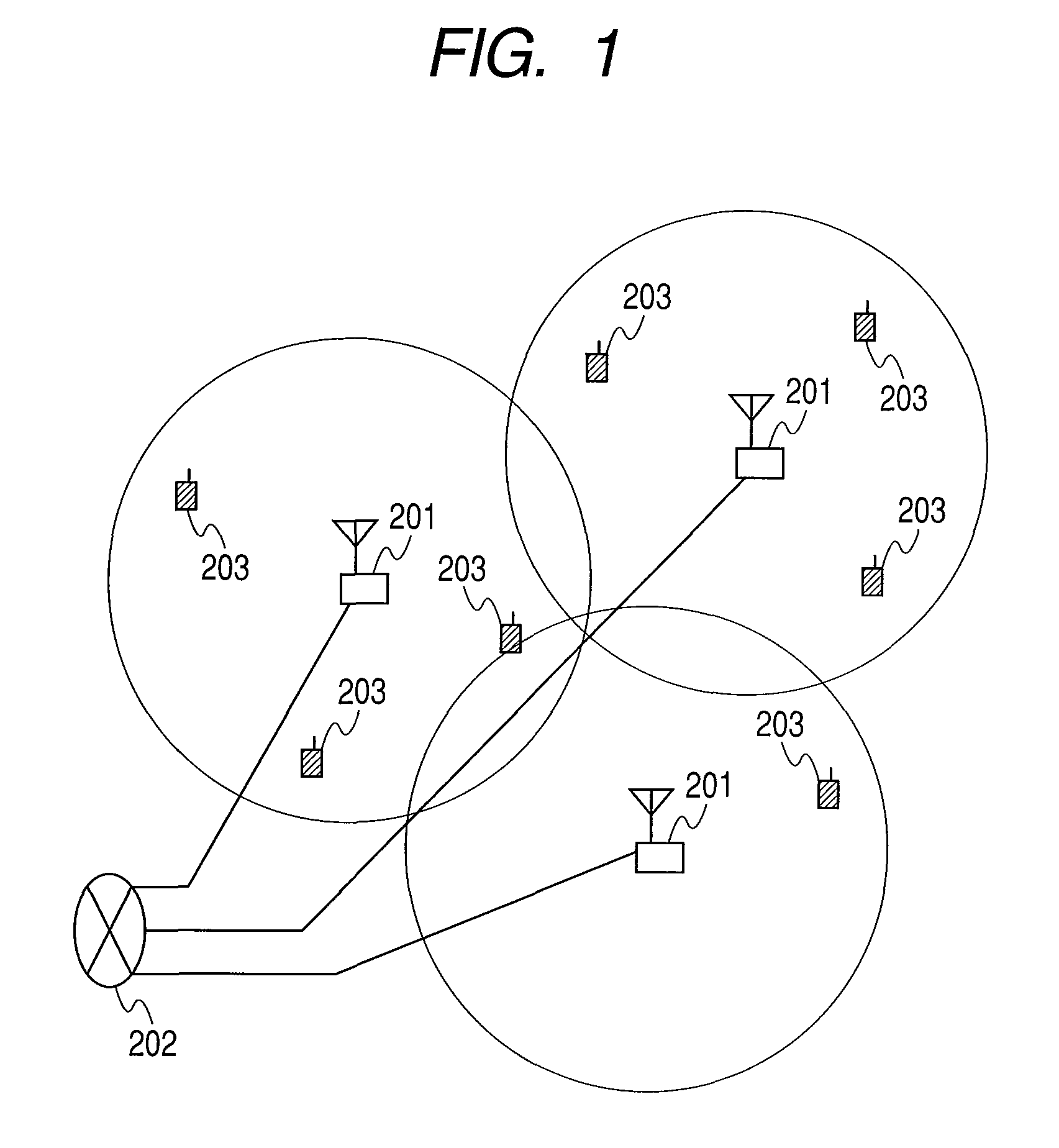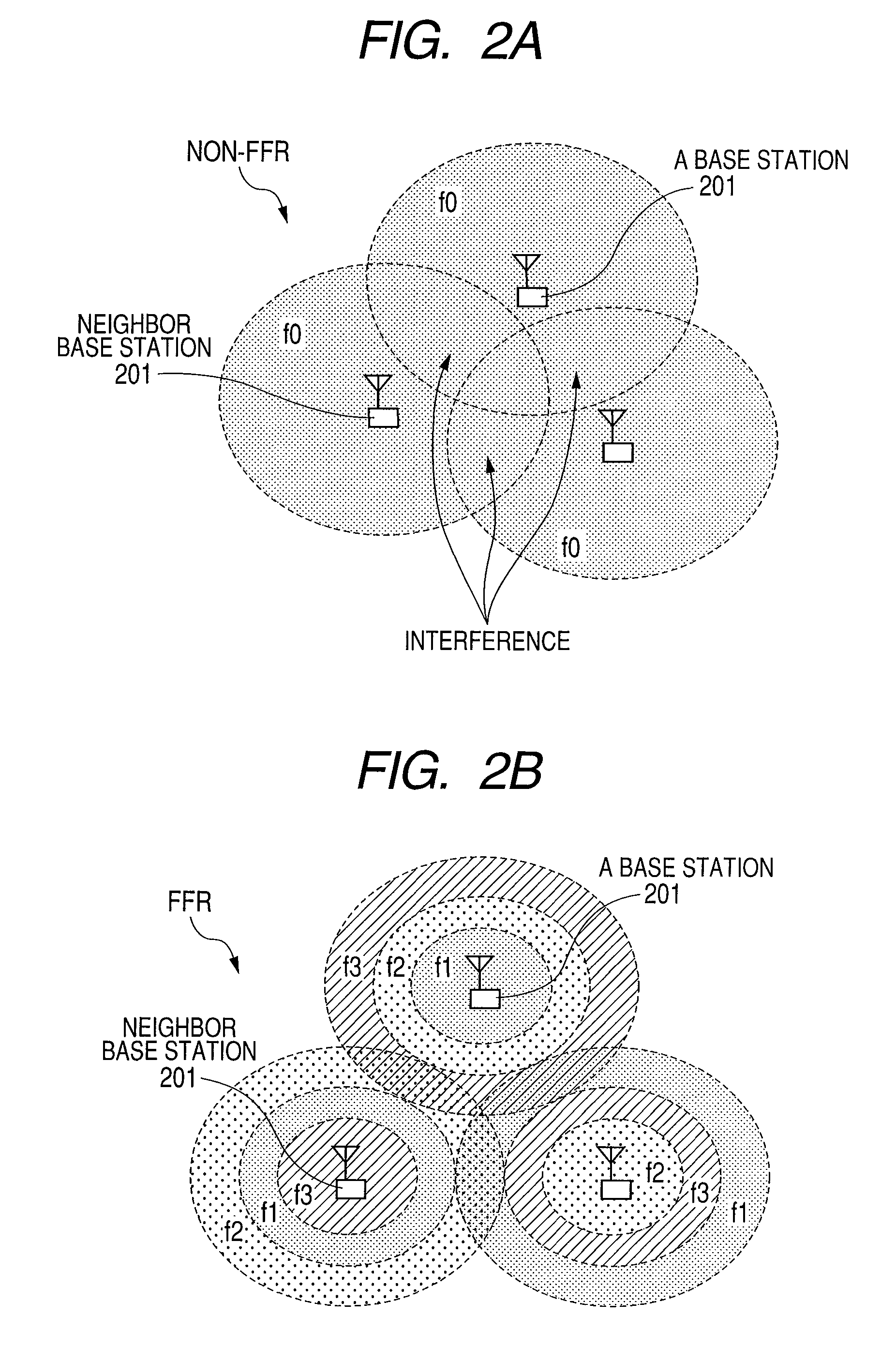Method for radio resource control and base station using the same
a radio resource and base station technology, applied in the field of dividing radio resources, can solve the problems of reducing the radius of a cell, reducing communication speed, and ineffective technology in reducing intercell interference power supplied to other cells, so as to suppress the excessive power of retransmission traffic and enhance the system. the effect of system performan
- Summary
- Abstract
- Description
- Claims
- Application Information
AI Technical Summary
Benefits of technology
Problems solved by technology
Method used
Image
Examples
Embodiment Construction
[0042]Hereafter, description will be given to an embodiment of the invention with reference to the drawings. This embodiment is an embodiment of the invention and the invention is not limited to this embodiment.
[0043]FIG. 1 is an explanatory drawing illustrating the configuration of a cellular radio communications system in this embodiment of the invention.
[0044]The cellular radio communications system in this embodiment includes multiple base stations 201. The base stations 201 are connected with one another through a network 202. Each base station 201 communicates with mobile stations 203 contained in the cell of the base station. Each base station 201 connects a mobile station 203 contained in the base station and a mobile station 203 contained in another base station 201 through the network 202. The base stations are classified into macrocell, picocell, and femtocell base stations depending on the size and functions of a cell in which communication service is provided. For examp...
PUM
 Login to View More
Login to View More Abstract
Description
Claims
Application Information
 Login to View More
Login to View More - R&D
- Intellectual Property
- Life Sciences
- Materials
- Tech Scout
- Unparalleled Data Quality
- Higher Quality Content
- 60% Fewer Hallucinations
Browse by: Latest US Patents, China's latest patents, Technical Efficacy Thesaurus, Application Domain, Technology Topic, Popular Technical Reports.
© 2025 PatSnap. All rights reserved.Legal|Privacy policy|Modern Slavery Act Transparency Statement|Sitemap|About US| Contact US: help@patsnap.com



